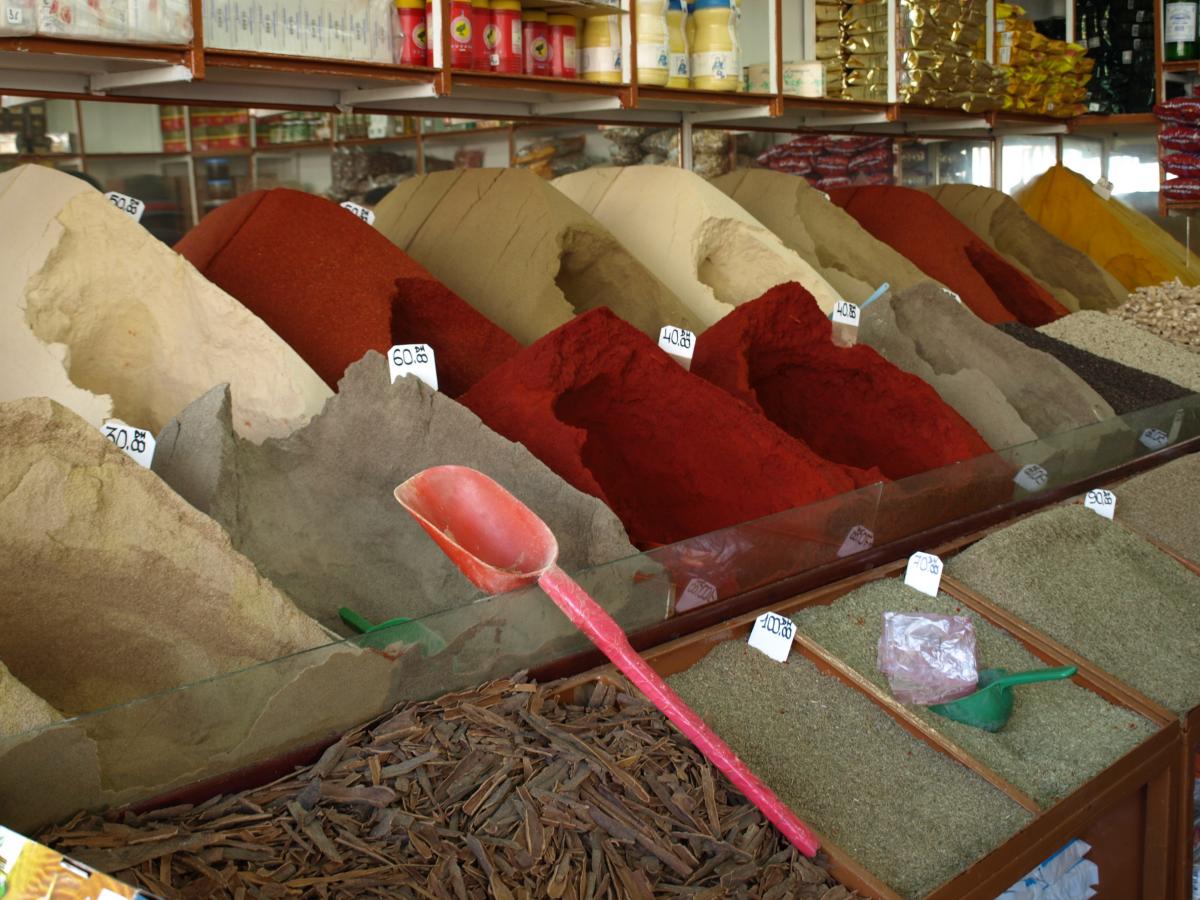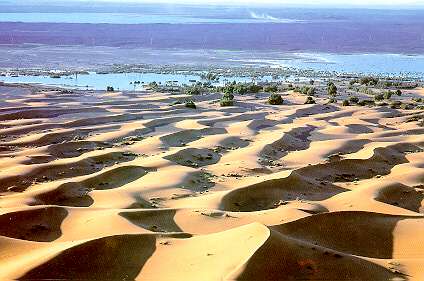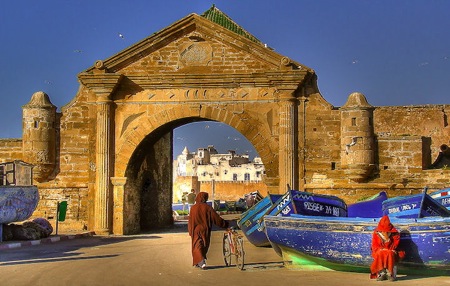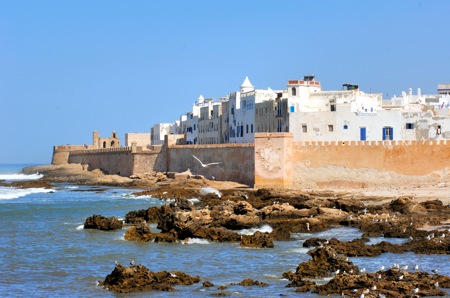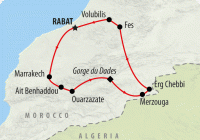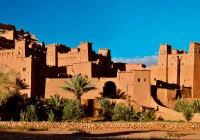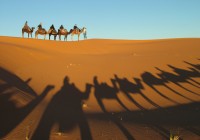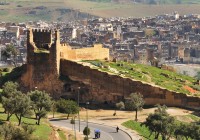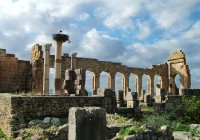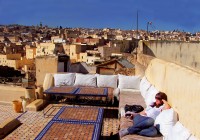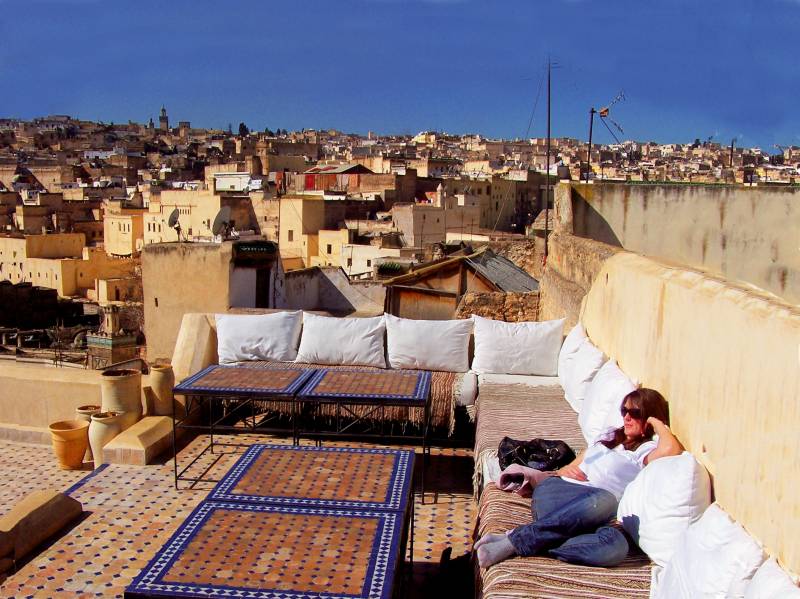Reflections on a Semester Abroad in Morocco



Yesterday I graduated from University of Hartford. I am no longer a student, I am officially a college graduate. I am finally entering “the real world” with practically no solid plans for the future. People keep asking me how it feels. It feels like I've been standing on a diving board for the past twenty-two years, toeing the edge, and someone just gave me a good, solid push. That feeling when you're falling through the air and your stomach drops and you suddenly can't breathe and you're terrified but it's the best kind of terrified- that's what it felt like to graduate. Now, I've belly flopped into the pool and have no choice but to start swimming.
I'm not entirely sure what happened to the past four years. I met some incredible people. I realized my passion for writing. I developed terrible sleeping habits.
I do know that in the future, when somebody asks me about my life in college, I won't hesitate to say that studying abroad was the most educational and enriching aspect of my college career. That's not to say that I didn't learn a lot while on campus; I did, but studying abroad taught me things which I could never have hoped to learn while staying at school.
I spent a semester in Morocco, living with a Moroccan family and struggling everyday to learn Arabic and become assimilated into a culture very different from my own. The first two weeks of classes included a crash course in Darija, a Moroccan dialect, in which my classmates and I sat in a room for four hours a day attempting to absorb as much information as possible. Including writing hundreds of pages of papers and homework and tests over the years, I don't think I have ever pushed my brain to work as hard as I did sitting in Nawal's introductory Darija class. By the end of the day I couldn't remember which language I was supposed to be thinking in. I left everyday feeling exhausted and confused, but accomplished.
Academically, I learned a lot about Moroccan history and about Arabic but by living with my host family I was able to study the culture firsthand. At least in the beginning it felt like I was studying my family, but with every day that passed I became more assimilated. I grew used to their routines and formed my own. Soon I wasn't confused as to where I was when I woke up in the morning and I was no longer startled by the call to prayer. My family gave me a Moroccan name: Emina. I felt more and more at home in the Kasbah.
Without my host family, I still would have enjoyed studying abroad. I still would have learned a lot and I still would be prompting the students I meet now to study abroad. However, living with them gave me a much more intimate and comprehensive connection to Moroccan culture than I ever could have hoped to have without them. They made me feel comfortable enough to ask anything, not only about language but also culture and politics and religion. They fed me until I thought I'd never be hungry again; and then they fed me more. They took care of me when I was sick. They loved me like their own, and I grew to love them too. I think about them all the time and someday will travel back to Morocco to visit them. They are and will always be my Moroccan family.
At the end of three and a half months in Morocco, I had gotten so attached to my family and to the culture that while I missed my friends and family back home, it was extremely difficult for me to leave. Coming home was strange because I experienced reverse culture shock.
The initial culture shock of leaving the United States and arriving in Morocco was to be expected. I knew that things would be different from back home, but I had no idea how different some things could be. This shock was, ultimately, a positive one. My world and my reality was turned on its head and I was left completely disoriented and forced to survive. Not only did I survive, I thrived, and I learned so much in the process.

I think that everyone needs their reality to be shaken up every once in a while, if only to put things into perspective. I got a lot of perspective while studying abroad on several different aspects of my life which I could not have anticipated.
I had hoped that while studying abroad I would figure out what I wanted to do with my life, that I would suddenly have a plan for the future. For some of my classmates this was the case, but not for me. I didn't leave Morocco knowing what I would do after graduation, but I left with a new outlook on life. The future was still scary, and I was still unprepared, but I wasn't quite as stressed as I had been before. When I had complained to my host family about how I thought I'd never get a job with my English degree and how I was going to end up living at home forever and how I had no future, they laughed at me.
Not only was I getting an education, I was able to travel around the world to do so. Not only did I have a home to go back to but a family who would support and encourage me. My host grandfather, as it were, would tease me a lot but he constantly reminded me of how much opportunity lay before me. In the most gentle and caring way possible he made me realize how petty all my anxiety and fear about the future really was.
Moroccans cannot leave the country without a visa, which is close to impossible for many people to obtain. My host grandfather, in his late sixties, would most likely never get to leave the country. He would tell me wistfully about how he longed to move to Germany and get a job and marry a nice German girl. Then he would cackle and wink at me and tell me not to worry about anything, I would be fine. And I know that he's right, I will be fine.

I made a lot of questionable decisions in college, but the best decision I made was to study abroad. No matter what your goals are for the future, I believe that you should study abroad. It can only help prepare you. Go anywhere, it doesn't matter what country you go to, as long as it's something new and different. Now is the time for adventures; now is the time to study abroad.

Maral pictured with her family at graduation.
Maral graduated from the University of Hartford with a BA in English/Creative Writing and a minor in French. She spent a semester abroad in Rabat, Morocco through the Council for International Education & Exchange (CIEE) in Fall 2011.
morocco culture,moroccan food,morocco food,moroccan cuisine,morocco beaches,moroccan meal,beaches in morocco,moroccan culture,hercules cave,hercules cave morocco








